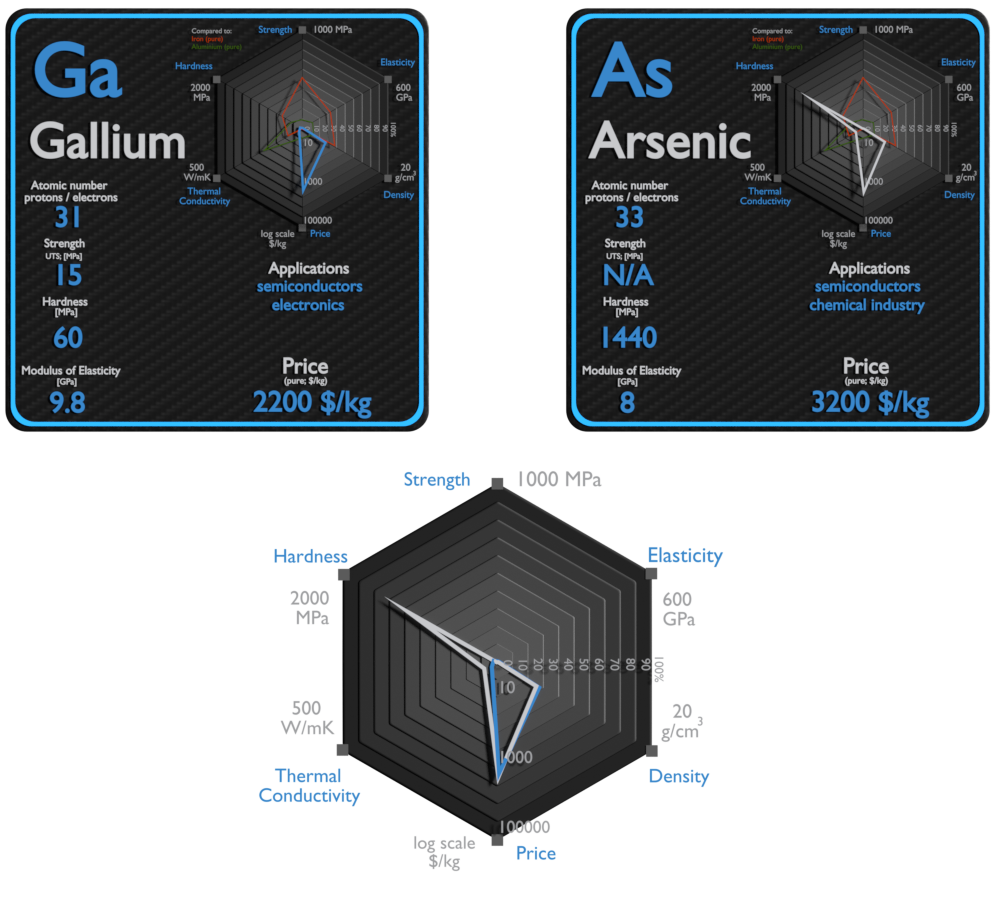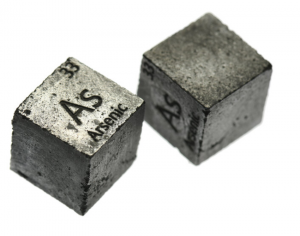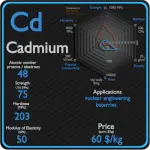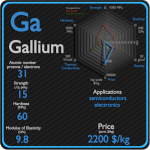This article contains comparison of key thermal and atomic properties of gallium and arsenic, two comparable chemical elements from the periodic table. It also contains basic descriptions and applications of both elements. Gallium vs Arsenic.

Gallium and Arsenic – About Elements


Source: www.luciteria.com
Gallium and Arsenic – Applications
Gallium
Gallium consumption is centred on the superconductor industry. Semiconductor applications dominate the commercial demand for gallium, accounting for 98% of the total. When alloyed with arsenic to produce gallium arsenide (GaAs), it can convert electricity to light. Due to such properties, it is used in LEDs, and has been found to produce less heat than silicon, rendering it suitable for use in supercomputers.
Arsenic
Arsenic is used as a doping agent in semiconductors (gallium arsenide) for solid-state devices. It is also used in bronzing, pyrotechnics and for hardening shot. Arsenic compounds can be used to make special glass and preserve wood.
Gallium and Arsenic – Comparison in Table
| Element | Gallium | Arsenic |
| Density | 5.904 g/cm3 | 5.727 g/cm3 |
| Ultimate Tensile Strength | 15 MPa | N/A |
| Yield Strength | 8 MPa | N/A |
| Young’s Modulus of Elasticity | 9.8 GPa | 8 GPa |
| Mohs Scale | 1.5 | 3.5 |
| Brinell Hardness | 60 MPa | 1440 MPa |
| Vickers Hardness | N/A | N/A |
| Melting Point | 29.76 °C | 817 °C |
| Boiling Point | 2204 °C | 614 °C |
| Thermal Conductivity | 40.6 W/mK | 50 W/mK |
| Thermal Expansion Coefficient | 18 µm/mK | 5.6 µm/mK |
| Specific Heat | 0.37 J/g K | 0.33 J/g K |
| Heat of Fusion | 5.59 kJ/mol | N/A |
| Heat of Vaporization | 258.7 kJ/mol | 34.76 kJ/mol |





